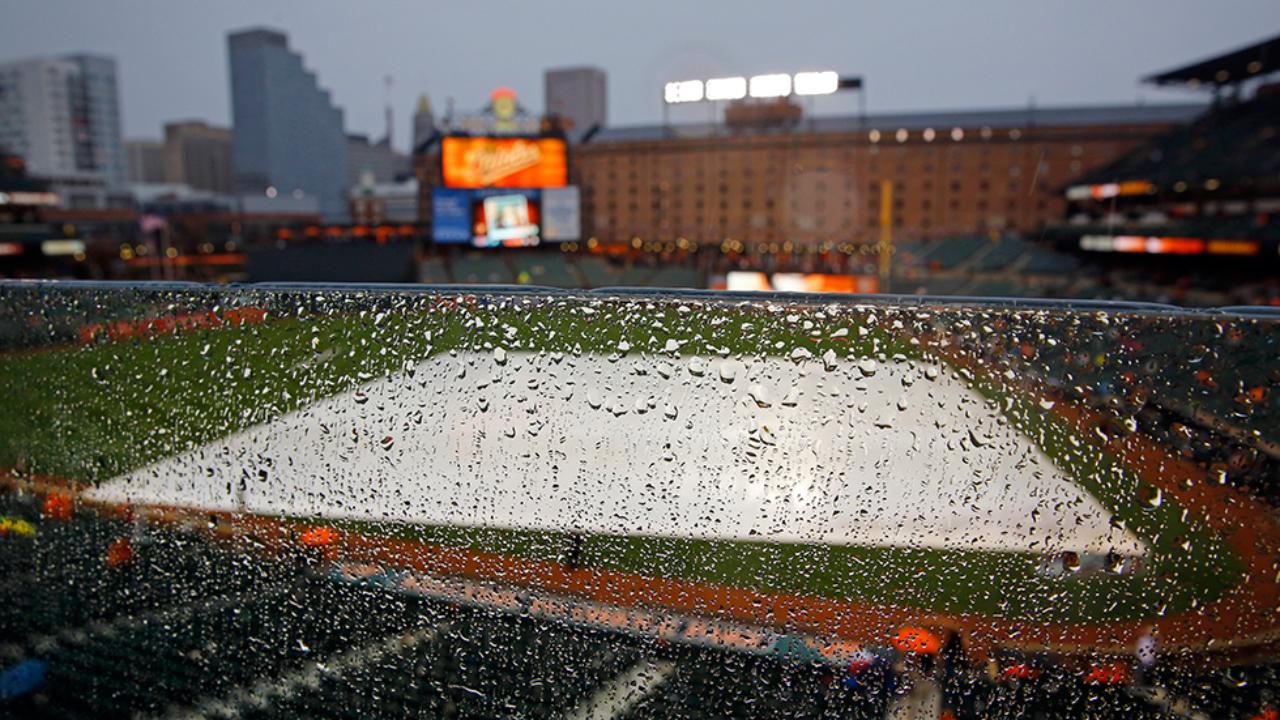

Flip on your local broadcaster at 7:30 PM on a game night, and what do you find but a re-run of The Bad News Bears or a celebrity golf tournament. What is the meaning of this! But of course…it’s a rain delay.
There are many different variables in play when trying to handicap a ballgame, but one of the biggest which gets overlooked is the weather. Let’s take a moment to go over how the different types of meteorological mayhem can affect the outcome of a baseball game.
When a baseball is flying through the air, the density pushes back, reducing how far a ball can travel. One way to understand this is to stick your hand out the car window going 65 mph and feel the push against it. Air density differs in various locations based on the temperature, humidity and air pressure. The ball will travel farther in thin air because it offers less resistance. Let’s take a look at all 3 components of air density, and also the factor of wind.
Air under low pressure is thinner, while it is thicker under high pressure. In Denver, Colorado, pressure is extremely thin, which is why balls tend to carry further inside Coors Field. Pressure in Denver is about 15% less than it is at sea level. A 400-foot home run at sea level would travel roughly 430 feet at Coors Field.
Odds-makers tend to adjust for this factor. You will always see MLB run-total lines in ballgame at Coors Field much higher than games at almost every other park. The majority of totals for Colorado home games are (10) or above. Meanwhile, the pressure rarely changes in Denver enough to matter. A low-pressure day is usually only 1% or 2% lower than on a normal day. A 400-foot homer would travel 402 feet in a low-pressure scenario.
Air with high humidity is thinner than dry skies. Even still, a home run may only travel a few inches farther on a humid day than a dry day. However, a baseball in a humid environment actually weighs more than a dry baseball. That means it is harder to hit a ball far in humidity. Essentially, a ball hit 400 feet on a day with average humidity would go about 415 feet on a dry day with low dampness.
The ball certainly travels further in warm weather than it does in cold. That’s why it’s usually a wise move to back under-bets on the totals line early in the season and overs in the warmer, summer months. Warm spaces are less dense than cold spaces. A 400-foot homer at 75 degrees would sail 408 feet at 95 degrees.
Of course it’s very wise to check which way the wind is blowing before picking on a baseball total. Obviously, if the breeze is blowing out towards center, there is a greater chance of home runs, which leads to more runs scored.
Also, if the wind is blowing in from center, there’s a greater chance of a pitcher’s duel. A 400-foot homer in calm conditions would travel 445 feet with a 15 mph tail wind to straightaway center, but in a gale coming in from center field the same swing will not produce a home run at all.
What to do when the breeze coming hard but across the field, not toward or away from the plate? Volumes have been written on batting and pitching in gale conditions, but fielding is a bigger concern. Even line drives can trick golden gloves with a subtle vector change from a sudden gust. All in all, expect errors to go up in a stiff jet stream.
Finally, if there is rain in the weather pattern, be on the look-out for storms predicted to hit at the mid-inning mark of a ballgame. Those scenarios will greatly effect early-game decisions by managers, as each club scrambles to get a lead that will be safe if the night is rained out after 5 frames have been completed.
Of course, these are all subtle effects of dampness or a breeze – or playing ballgames in the Rocky Mountains. But if your game is hit with storms or hard rain and you’re not sure how the sportsbook rules work, just consult our article here for more about MLB betting rules and scenarios.
Here’s hoping for a mercury-hot record in August – in more ways than one.